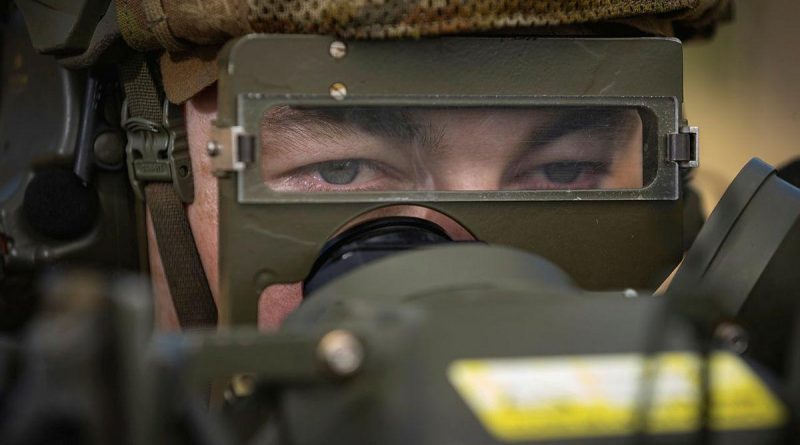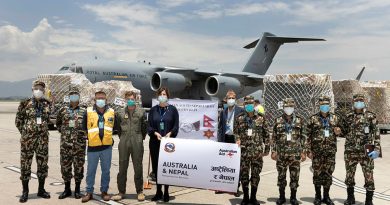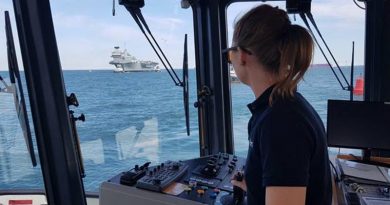Striking in a new way

It’s the ADF’s newest joint warfighting concept and it’s on show at this year’s Exercise Talisman Sabre (TS21) in a big way.
CAPTION: Gunner Nathan Wood, of the 16th Regiment, Royal Australian Artillery, observes a target during the RBS 70 man-portable air defence missile system training serial at the Shoalwater Bay Training Area. Story by Petty Officer Jake Badior. Photo by Corporal Madhur Chitnis.
Multi-domain strike is the synchronisation of effects in the traditional operating domains of maritime, land and air, with the newer domains of space and information/cyberspace.
It’s a potent way of operating for the ADF and an important aspect of training with partner forces, according to Colonel Effects Deployable Joint Force Headquarters Colonel Corey Shillabeer.
“When faced with a potential adversary, multi-domain strike means we can create multiple dilemmas in all domains, either simultaneously or sequentially, as required,” Colonel Shillabeer said.
“If there is a need to destroy a high-value target, first we might aim to dislocate so adversary forces cannot respond to our actions.
“We may do this by disrupting their communication systems while utilising kinetic means to destroy other aspects of the adversary force.
“Australia has always performed well as a joint warfighting force – however, rarely will we operate alone. Interoperability with our partners is important.”

CAPTION: Able Seaman Wynita Franklin in HMAS Ballarat’s operations room during the five-inch gun firing exercise. Photo by Leading Seaman Ernesto Sanchez.
Commanding Officer Task Force Fires United States Marine Corps (USMC) Lieutenant Colonel Roe Lemons said TS21 was a fantastic way to integrate US and Australian forces and further strengthen the alliance.
“With our strong partnership and alliance, we are able to seamlessly integrate our common tactics, techniques and procedures, our equipment and cross-train on the same systems,” Lieutenant Colonel Lemons said.
“A lot of our forces, myself included, have fought alongside Australian troops in Iraq and Afghanistan – it’s one of the strongest allies we have and we’re just making it stronger.”
The live-fire exercise involved naval gunfire from HMA Ships Ballarat and Parramatta, USS Rafael Peralta and Japanese Ship Makinami.
There was no shortage of air support from RAAF F/A-18A Hornets, USMC F-35B Lightning II, Army’s Tiger armed reconnaissance helicopters, USMC AH-1Z Viper and UH-1 Hueys, as well as aerial surveillance provided by the Shadow unmanned aerial system.
The land-based strike elements included the Australian Army’s RBS 70 man-portable air defence system, combined Australian Army and USMC M777 self-propelled Howitzer batteries, US Patriot surface-to-air missiles and the US Army’s and USMC’s High Mobility Artillery Rocket System.

CAPTION: A United States Marine Corps AH-1Z Viper helicopter flies over Townshend Island during a live-fire exercise as part of Exercise Talisman Sabre. Photo by Leading Aircraftwoman Jacqueline Forrester.
Behind the scenes, the information, cyber and space effects complemented the kinetic actions.
“First, we need the ability to find, fix, track and then target the adversary using intelligence and sensors before engaging any threat to friendly forces,” Colonel Shillabeer said.
“If we can continue to rehearse and practice our interoperability between forces and across domains, we are likely to maintain an advantage against any potential adversary.”
The interoperability, intelligence sharing, and technological cooperation between Australia, the United States and other international partners is critical to Australia’s national security.
.
.

.
.





